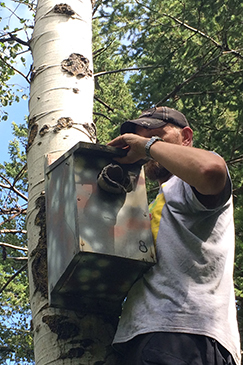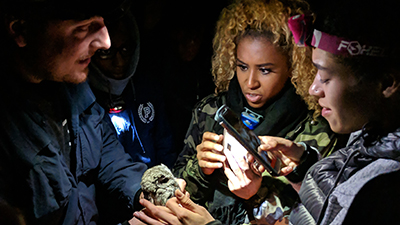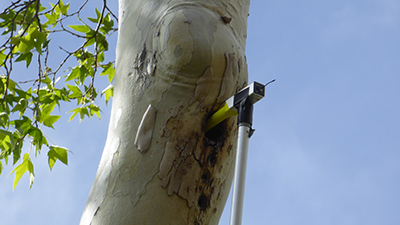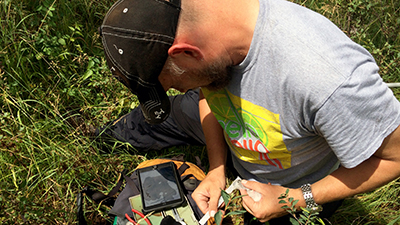プログラム調査日程・空き状況・参加費用等、海外調査に関するお問い合わせは、アースウォッチ・ジャパン事務局にて承ります。info@earthwatch.jp までお気軽にお問い合わせください。
All small forest owls rely on tree cavities for nesting. But what happens when these cavities begin to disappear?

From deep within aspen groves in northern Utah to the riparian canyon and coniferous forests in southeastern Arizona, a suite of small forest owl species—many roughly the size of a human hand—seek out tree cavities, hollow openings such as those carved by woodpeckers, to build their nests. The majority of species are nocturnal, hunting for insects, small mammals, and birds under the cover of darkness, taking moths, beetles, centipedes, lizards, and even the occasional bat on the wing.
But climate change threatens to disrupt the routine of some of these species. Scientists predict that within this century, aspen forests may all but disappear in many areas. Natural tree cavities will disappear too, affecting not only owls, but other species that rely on these cavities for nesting. Climate-related changes may also disturb the owls’ food sources—for example, warmer temperatures could affect the timing of when insects or mice emerge from eggs and burrows, events which many owl’s breeding seasons are carefully linked to.
Join Earthwatch and partner HawkWatch International in one of two locations—in northern Utah or southeastern Arizona—to study owl ecology in several unique habitats, learn about nesting and breeding behaviors, and investigate potential impacts climate change will have on owls and other wildlife. During the day, you’ll measure owl habitat—locating tree cavities and taking GPS and other measurements. At night, you’ll listen for the low-pitched ‘boop’ of the Flammulated Owl, the high-pitched laughing of Elf Owls, or the non-stop ‘reverse signal’ tooting of the Northern Saw-whet owl while you survey for, capture, and band owls that fly above you.
HOW YOU WILL HELP
When you arrive, the researchers will teach you the basics of working with small forest owls. You will be well prepared to help them:
.

SURVEY AND CAPTURE OWLS AT NIGHT
Listen for responses to recordings of target species of owls used to assess their presence. You’ll help to set up and take down lightweight mist nets with pockets that catch and hold the owls. When you catch one of these little birds, you’ll help the researchers take its measurements, photograph it, and attach a band before releasing it back into the wild.

MEASURE THE HABITAT
Search for natural tree cavities and record their GPS locations. Search cavities for evidence of owl usage using mirror poles or specialized video cameras. Measure tree height, canopy cover, tree density, and vegetation in surrounding habitat.

WEIGH AND BAND NESTLINGS
Depending on the season, help researchers to weigh nestlings (young owls) found in the cavities or nest boxes and attach bands.
